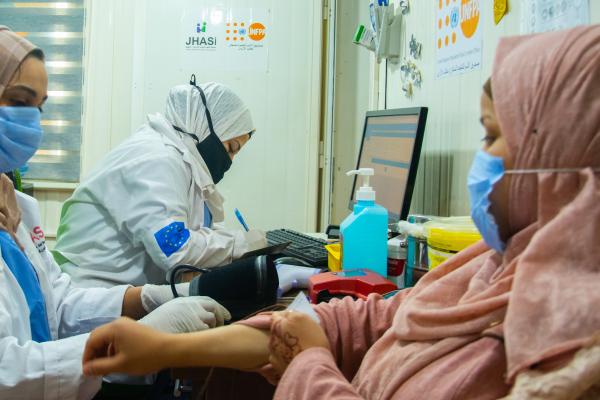How are Afghans doing more than 2 years after the withdrawal of international troops?
And more specifically, how is access to healthcare in the country? To answer those questions, a graphic novel, just published by EMERGENCY, takes readers through a working day in its health centres in the country, which are supported with EU funding.
Till the Last Bird Sings tells the story of Afghan men and women working in EMERGENCY’s healthcare facilities in the country, and of the patients that receive care there every day.
With more than 40 first-aid posts and primary health centres in Afghanistan, as well as surgical, pediatric, and maternity facilities, the NGO has witnessed the main health needs of the population in recent years.
As Afghanistan continues to face one of the most serious humanitarian crises in the world, the novel puts the spotlight on the difficulties faced in accessing healthcare. Violence persists throughout the country. EMERGENCY’s surgical hospitals continue to admit patients with violent trauma from bullets, stabbings, landmines, and other explosive devices.
Afghanistan is among the top countries contaminated by ordnance, the remnants of war intentionally left behind to devastate communities long after direct conflict ends.
Patients continue to face many obstacles. Treatment is often too costly, there are few ambulances in case of emergency, and facilities lack adequate equipment, electricity, and water, especially in rural areas.
There are also shortages of specialist personnel, as many in the health sector have left the country, resulting in a “brain drain”. According to a report published by EMERGENCY, more than 1 in 5 respondents lost at least 1 family member or friend in the past year because they had no access to care.
Against this background, EMERGENCY’s centres are providing much needed care. In 2023 alone, EMERGENCY’s hospitals admitted over 25,000 patients and conducted over 120,000 outpatient visits. More than 5,000 babies were born in its maternity centre.
Women are a particularly vulnerable group. They face various obstacles, including financial barriers, a lack of safe transport, and the absence of clinics providing obstetrics in rural areas. In addition, restrictions imposed on education for women and girls are expected to cause a long-term shortage of female health workers. This will impact both maternal and pediatric health services across the country.
To tell that story, EMERGENCY partnered up with Italian graphic artists La Tram (Margherita Tramutoli), who designed the illustrations, and Francesca Romana Torre, who wrote the narration. Both travelled to Afghanistan last summer, where they visited the NGO’s health facilities and listened to the experiences of the staff and patients.
The result of this collaboration is a beautifully illustrated novel that captures some of those daily moments. The narration follows several characters during a working day.
As the authors point out, ‘We do not know what the future will hold for Afghanistan, but we wanted to capture the present with a story made up of extraordinary little moments. A story accompanied by the singing of goldfinches, a traditional metaphor for a people who endure in spirit, and celebrate their innate poetry, in spite of the enormity of their situation and the vulnerability of everyday life.’






